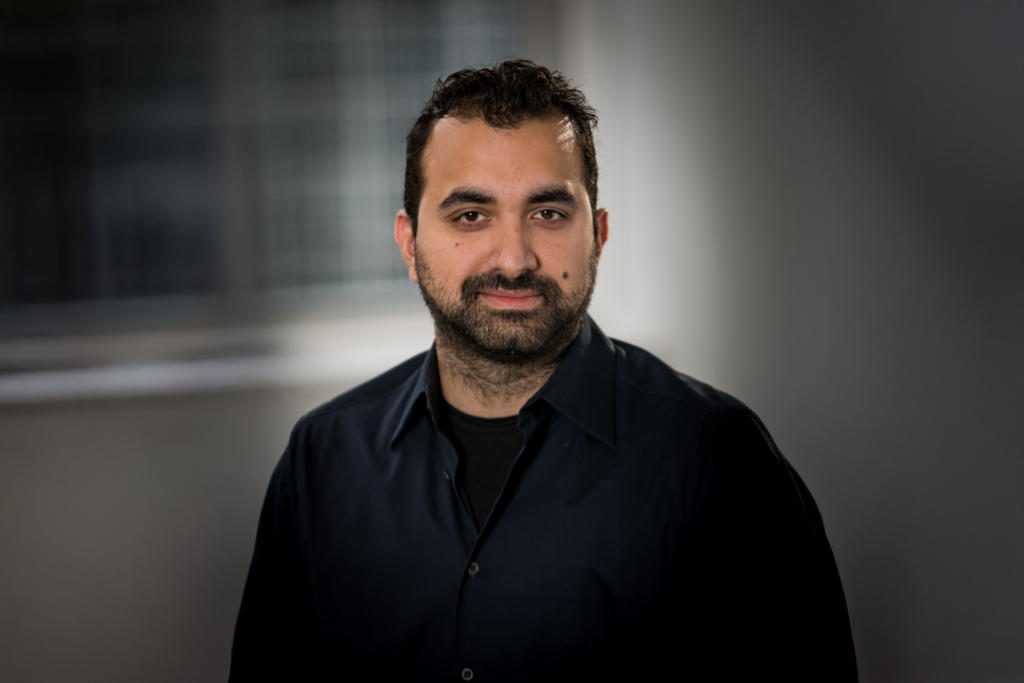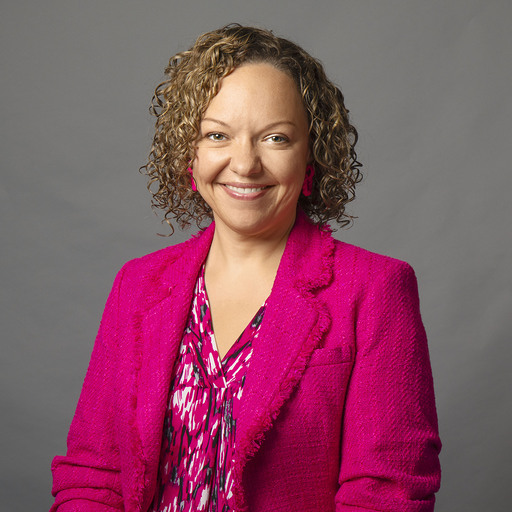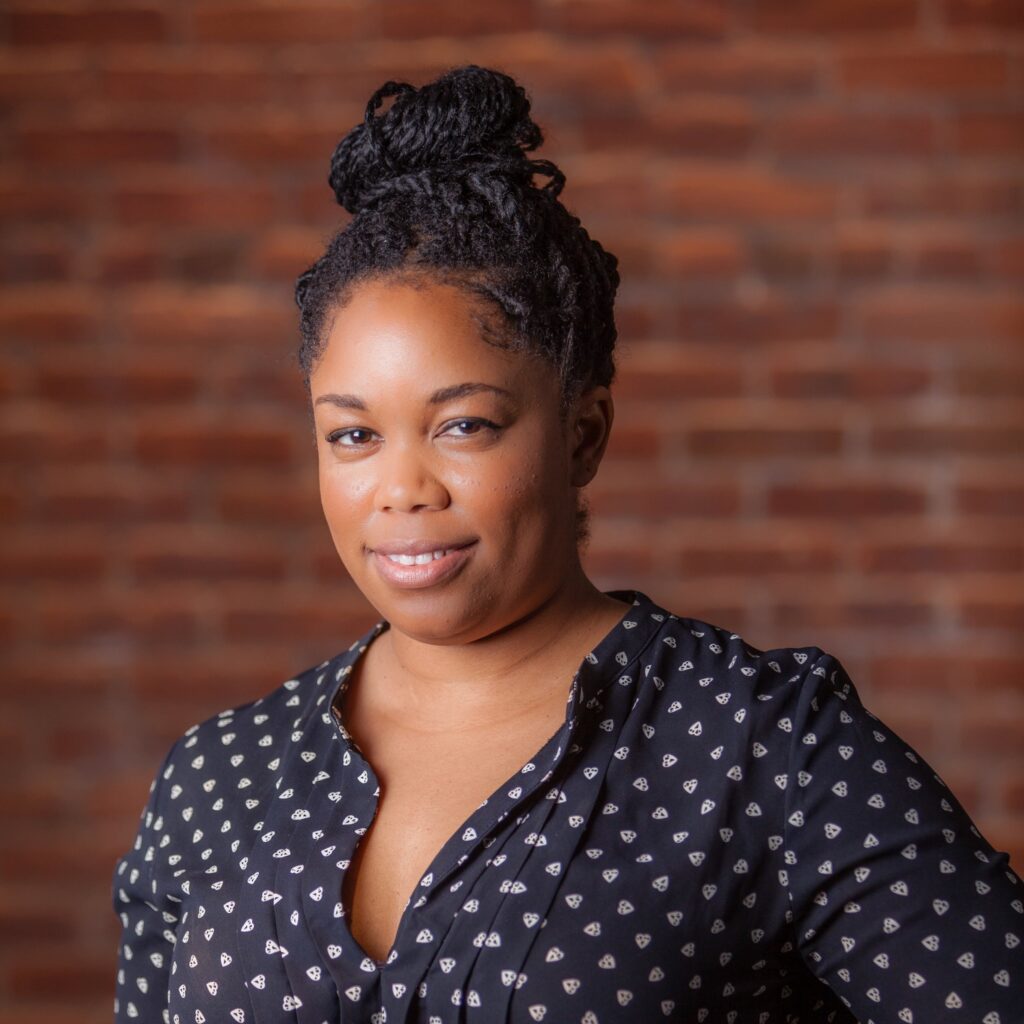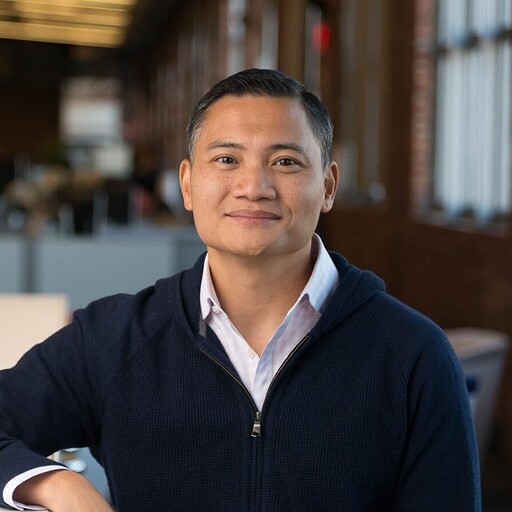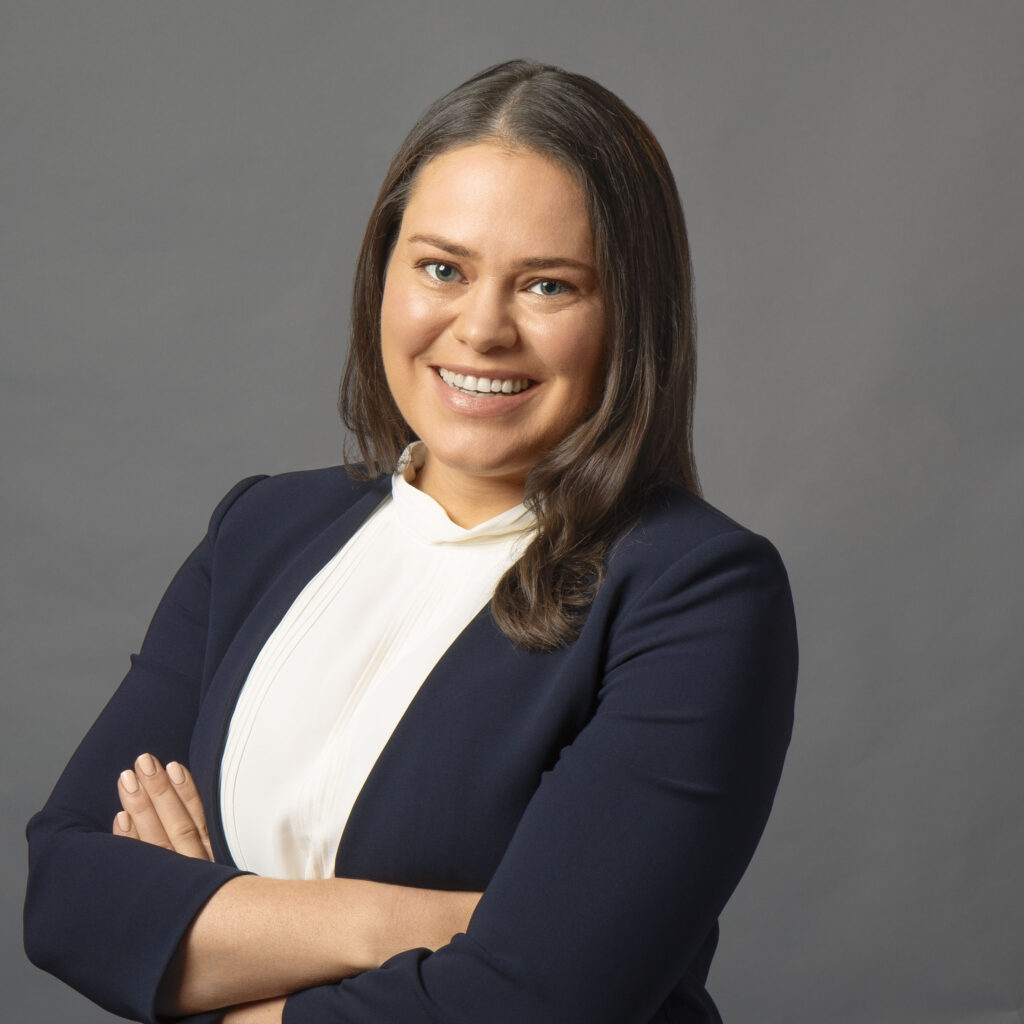To spotlight different perspectives and give an inside look at Grubhub, we’re highlighting leaders from across the organization.
This month we sat down with Dave Tovar, Senior Vice President of Communications and Government Relations, to hear his three principles for effective communication, the importance of transparency in leadership, and how collaboration and adaptability drive his team’s greatest successes.
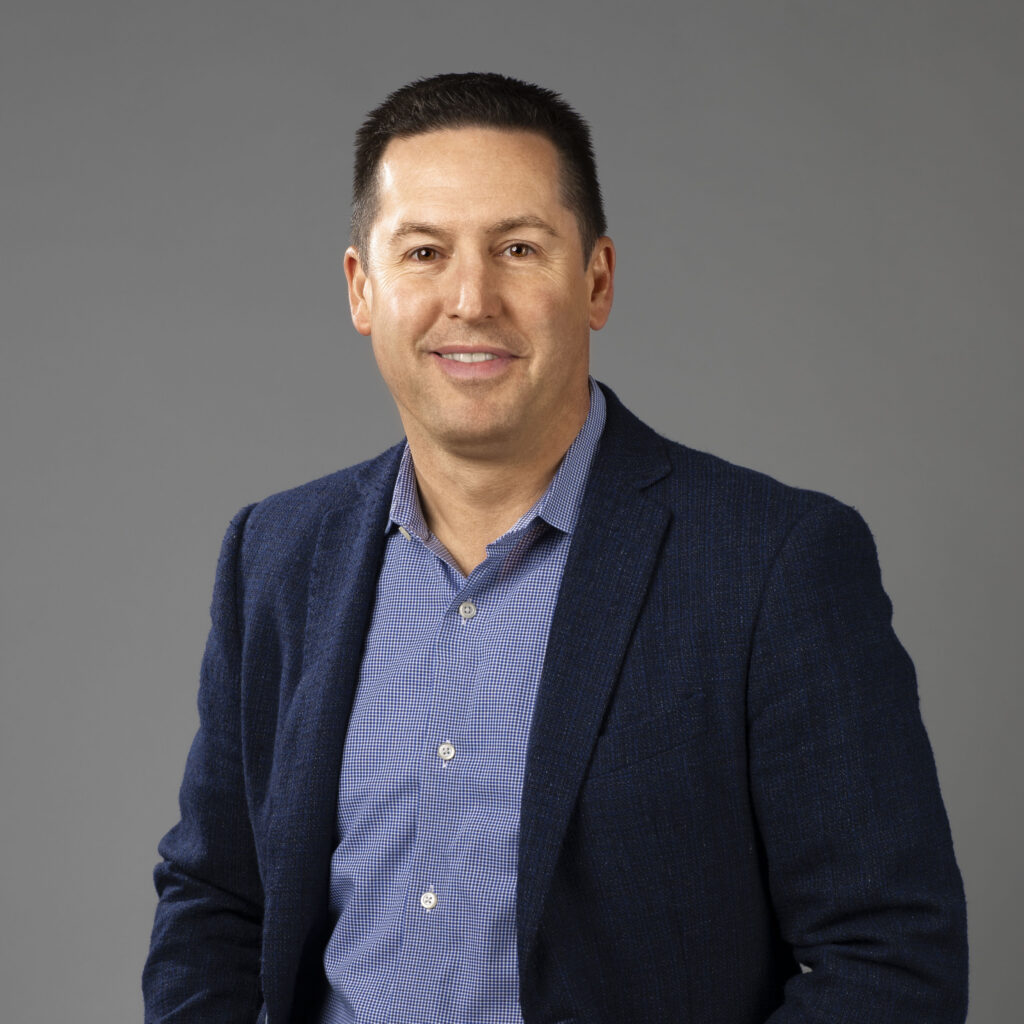 A quick round to get to know Dave:
A quick round to get to know Dave:
- Favorite Grubhub order: New York-style pizza on Friday nights is a sacred ritual in the Tovar household. Lately, Union Squared has been the go-to, but there’s a weekly debate over which North Shore spot wins out.
- Coffee or tea: Trick answer—neither. I wake up naturally with an abundance of energy despite getting a short amount of sleep. If I’m going to drink something throughout the day, it’s water and LaCroix.
- Recent read: Invisible Rulers by Renée DiResta. It’s a powerful exploration of misinformation and how DiResta became the target of the very forces she studies. She literally became the subject of her own research. It’s a fascinating story.
- Biggest fandoms: As lifelong New Yorker, I rep the Jets, Yankees, Rangers, and Knicks. I’m proud to say that I was able to fully convert my son as well, despite him being born and raised outside of the state.
- Game day rituals: No superstitions, but we’re those people who love visiting stadiums and proudly fly our NY flags—even in rival cities.
- First job: I was a newspaper boy in the county I grew up in in New York. I actually grew my route into the most subscribed in the county — with over 200 daily deliveries. My bike was so weighed down at the start of the day! I also worked as a busboy at a restaurant throughout high school, often pulling double shifts.
- Favorite app: SkyTrak — it’s a golf app that works with a launch monitor to give you all sorts of data and analytics related to your golf swing. None are helping me yet, but I’m still working on it.
- Typical weekday: I get up early and work out. While working out, I’ll listen to and watch MSNBC, CNBC, and ESPN radio. After that, I take the train into the city and catch up on any news related to Grubhub or our industry before I get into the office. I love being around people, so I enjoy being in the office and feeding off the energy of the team. Being in the office also helps me compartmentalize my work and personal life. I’m focused on work when I’m in the office and once I’m back at home, I go into dad and husband mode.
- Typical weekend: My weekends aren’t too different from my weekdays. I still wake up early–just can’t seem to sleep in–and will either go for a long run or bike ride depending on the weather. I also try to golf whenever I can, but with the weather in Chicago, the golf season isn’t as long as I’d like.
You’ve built a career spanning communications across different industries—what drew you to Grubhub and the food delivery space?
It felt like a unique challenge. The pandemic was a huge boom for sales but a bust for reputation. There were lots of negative articles and bad legislation created around the industry. The remit was: help the company figure out what we’re going to do with those reputational challenges, put forward better representation externally, and create a better regulatory environment so we can maintain our license to operate and grow.
When you first joined Grubhub, comms didn’t always have a seat at the table at the exec team level. How did you approach stepping into that kind of environment?
It starts with listening. My father always told me you have two ears and one mouth, and you should use those proportionately—which does not come naturally to me. I did meetings across all functions and levels to learn the business and culture. I also wanted to create stability because there had been a revolving door in roles similar to mine. I knew when I joined that I wanted to be here for a while to create consistency and build something over time.
What was your vision for building and shaping the comms and GR team?
Strategy drives structure, not the other way around. We built strategy first, then decided what resources we needed. When we got to the team, it was about creating one cohesive unit—we didn’t want siloed communications here and government relations there. We had to be singularly focused on our overall objectives and leverage everything together.
Can you break down the different responsibilities of the comms and GR functions and how these focus areas work together?
For comms, we have internal and external communications — external focuses on telling Grubhub’s story through media, paid, earned and owned channels, while internal is all about how we communicate with our employees to keep them informed, engaged, and inspired.
Corporate reputation falls between comms and government relations, focusing on strengthening relationships with opinion leaders — those who vote, influence policy, and shape perceptions — and demonstrating Grubhub’s positive impact on restaurants and drivers. This work also includes our corporate philanthropy and social impact initiatives, alongside paid, earned, and owned media as well.
Lastly, our government relations team focuses on shaping public policy that impacts our industry at the federal, state, and local levels, with most of our engagement and challenges happening at the state and municipal level.
There’s never a shortage of creative ideas for how to break through and reach consumers—how do you and the team decide which ones are worth pursuing?
It’s an iterative process. I like to think of communications and PR as a mix of art and science. There’s data and analytics we can look at, but sometimes you rely on gut instinct and experience.
You can’t start by asking, “how do we make this go viral?” That’s the wrong approach. Instead, ask: what are we trying to communicate? Who is our audience? Do we think this will resonate with them? Is it culturally relevant and people will want to talk about it?
Some of our best campaigns have been things we’ve been working on for years that didn’t see the light of day for one reason or another. I’ve never seen a truly great idea die because of lack of resources—sometimes the idea just has to bake long enough in the oven before it’s ready to be unveiled to the world.
Is there a project or initiative your team has worked on that you’re most excited about or proud of?
Our Special Delivery campaign. It’s still being talked about and relevant almost a year later. That was probably three years in the making—every time we brought it back up, everybody loved the idea, but it wasn’t the right time.
We discovered that August is when the most babies are born in the U.S., so that became our target time. It was based on insight from moms—they often focus on what meal they want to eat after giving birth, even before thinking about their child’s name or the baby’s room color. After giving up certain foods during pregnancy, things like sushi, deli meats, and alcohol, they really crave getting them back.
It’s been a runaway success and won multiple awards. This campaign has been a crowning achievement for the team and for Grubhub to get that kind of brand recognition, probably for the first time in our history.
Communication plays a big role beyond just external messaging—how does your team support other parts of the business, and what does strong cross-functional partnership look like to you?
I think of our team as strategic communicators. So much of business is done through communication, and we have representation across all functions at Grubhub because we bring an important lens: everything we do, any communication with any stakeholder (internal or external), none of it is private anymore. Everything eventually makes its way onto social media or traditional media.
We have to ask ourselves: how would we feel if that communication ended up on the front page of the New York Times or Wall Street Journal? Would we be proud? Embarrassed? Ashamed? Those are the questions our team can help educate the business on to avoid self-inflicted wounds—decisions that might be good for Grubhub but viewed negatively by restaurant partners, couriers, or regulators. Ideally, we can help business leaders make decisions that are good for Grubhub AND our business partners.
From the JET acquisition and sale to our current integration with Wonder, the business has been evolving rapidly. How do you set a clear vision for your team while also staying flexible enough to continually adapt alongside those changes?
I take a page from political campaigns. You want about 80-90% of your communications to be proactive messages—front-footed communications that test well and are what your constituents want to hear. Then leave 10-20% for reactive messaging based on what’s in the news or what you need to respond to.
If you stray too far and become too reactive, your messaging becomes a series of one-offs. People will ask, “what do they stand for?” We have certain things we want to talk about and drive—those should be the majority. But we leave flexibility for issues that crop up. In one week, we might focus on something from left field, but measured over time, we should drive a consistent percentage of communications on the things we want to be talking about.
What are you most proud of your team for?
The fact that we truly operate as a team. We put company success and team success above our individual performance and accolades. We understand our overall objectives and are willing to roll up our sleeves and do whatever it takes.
The biggest example is finally getting the law changed in New York City to amend the fee cap that’s been in place for four years. From my very first interview at Grubhub, it was clear that was an important business priority. It took us four years—probably the single project I worked longest or hardest on in my career.
Not everybody on the team worked on it as much as others, but everybody knew how important it was and how to support each other. It wasn’t a straight line—there were great achievements like getting the bill introduced and hearings, and not-so-great moments when we knew it wouldn’t get done in one legislative session and we’d have to start over.
Our team rallied behind each other and helped lift each other up through that rollercoaster ride to finally get it done. While the business outcome is amazing in terms of the revenue that this will unlock, how the team performed throughout that four-year campaign makes me most proud.
June is Pride Month, and you’re the executive sponsor of Grubhub’s Pride employee resource group. What drew you to become the executive sponsor, and what have you learned from the experience? What are the most impactful ways leaders can show up as allies?
Throughout my career, I’ve always been involved with ERGs. When I first got to Grubhub, I was the executive sponsor for the working parents ERG. This past year, I took over the Pride Group. At McDonald’s, I sponsored the ERG for African American employees. At Walmart, I was involved in the Pride Group.
It’s important for a couple of reasons. I like to think my learning journey is never over, and I don’t think I know what it’s like to walk in everyone’s shoes. I have my perspective, but I want to hear from others. I also believe leaders need to walk the walk. It’s not enough to just say we have these groups and let them operate on their own. It takes leaders getting involved and rolling up their sleeves to help these groups achieve what they want to achieve.
This month, the Pride Leadership team wanted to take on some really important topics but weren’t sure how they would be received. They came to me as the executive sponsor who also happens to be the head of communications and is tasked with making sure we are always viewed appropriately by all stakeholders, so they came to the right place. We had good dialogue around positioning and talking about it so they feel comfortable advancing an agenda important to them while being received in the way they intended—to help educate and bring people along in their journey.
As for showing up as allies, I’ve learned to become a much more empathetic leader. People go through all sorts of things in life and career—very rarely is anyone’s career a straight line. We don’t know what people are bringing to work every day. If you can show up, make sure people know you’re an ally, and create a space for them to be themselves and share their perspective, they’ll more than meet you halfway and trust you more. That helps the organization work better together and achieve something far greater than if we all show up as individuals who don’t interact authentically.
Being able to communicate well is such an underrated skill and harder than it seems. To you, what makes someone a good communicator? Or if someone is looking to become a better communicator, where should they start?
Three things. First: what are you trying to communicate and why? You’re usually trying to help people understand, feel, or do something. Second: can you do it authentically? People become different when cameras turn on—be natural and credible. Third: practice, practice, practice. It’s a muscle that needs development. I had a coach who said you have to practice delivering your message 10 times beforehand to ensure it lands effectively with your audience. The worst mistake you can make is to shoot from the hip.
You’ve led teams at some of the most recognized brands in the world. How have those experiences shaped your leadership philosophy, and what elements have you carried with you into your role at Grubhub?
I’ve been fortunate to work for some incredible companies with great leaders. I started by emulating what I liked, avoiding what I didn’t, and over time I developed my own leadership style. I’ve always been drawn to transparency, people who are genuine, people who over-communicate and give context so people understand.
I’ve always believed that knowledge is not power to keep to yourself—knowledge is equity. As a good leader, you can give that away every single day. If you do that for people, it’s only going to make them do their jobs better, be more informed, engaged, and motivated to do the very best work of their careers.
If you could have any other job in the company for a day, what would it be and why?
A lot of people don’t know I was an art major in college. I think about things visually, and there’s something magical about how engineers can sit in a scientific way and write lines of code that are letters, numbers, and symbols that don’t look like much on a screen. But with the click of a button, it turns into something incredibly beautiful in an app or website.
My brain doesn’t work that way, so I’d love to sit down and write some of that beautiful code that turns into the incredible experiences we give our customers every single day.

